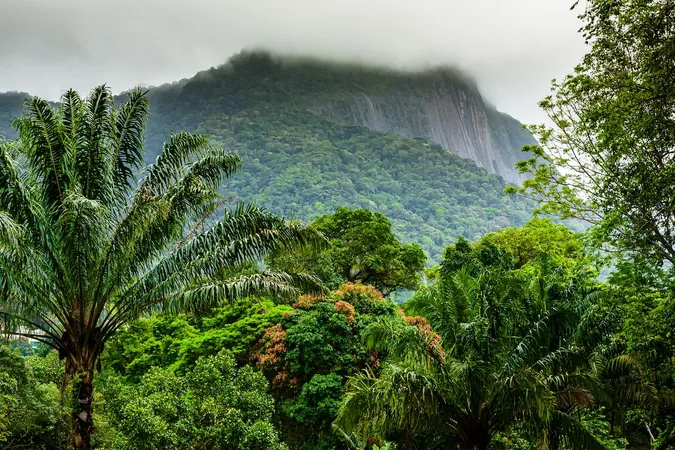
Unlocking Nature's Secret: How Diverse Forests Supercharge Carbon Capture!
2024-11-20
Author: Li
Introduction
A groundbreaking study has revealed that forests teeming with a variety of tree species not only enhance the beauty of our planet but also play a crucial role in combatting climate change by capturing more carbon dioxide from the atmosphere.
The Research
The research, conducted by an international team led by Dr. Lalasia Murphy at ETH Zurich, demonstrates that a rich diversity of tree species results in more productive forests, enabling them to absorb carbon at higher rates. Their findings showcase an interesting juxtaposition; trees that grow rapidly and capture carbon quickly are generally smaller and have shorter lifespans, which leads them to release the stored carbon back into the atmosphere much sooner. In contrast, larger, slower-growing trees with longer lifespans tend to sequester far more carbon over extended periods, particularly in biodiverse forests.
Benefits of Forest Biodiversity
Murphy indicated that forests rich in variety effectively tap into a broader resource pool, with different species thriving in various soil types and minimizing competition. This multiplicity allows for a dynamic interplay among species that can enhance carbon capture capabilities. “Promoting forest biodiversity is vital for maximizing carbon storage and bolstering forest resilience against climate change,” Dr. Adriane Esquivel-Muelbert, a co-author based at the University of Birmingham, emphasized.
Data Analysis
The team analyzed a staggering 3.2 million tree measurements across 1,127 species from northern Canada to southern Brazil, documenting trees that range from a mere 1.3 years to a staggering 3,200 years in age. Their work revealed that the slower-growing tree species—often characterized as long-lived—store carbon for hundreds or even thousands of years, proving crucial for long-term carbon sequestration.
Tropical vs. Temperate Forests
Interestingly, the research highlighted the stark differences found between tropical forests and their temperate and boreal counterparts. While tropical forests are home to a rich variety of tree species, boreal forests tend to have a more homogenous tree population, which primarily comprises slower-growing species. This discrepancy is attributed to the competitive dynamics within the tropical ecosystem, which promote a wider range of growth strategies to facilitate coexistence among species.
Conservation Implications
Murphy elaborated on the implications for conservation: “To enhance forest diversity, it is essential to guard against deforestation and wildfires while supporting restoration initiatives that emphasize native biodiversity.”
Climate Change and Growth Rates
The study also points out that the correlations between tree growth rates and temperature suggest that cooler climates slow down tree growth. This factor plays a significant role in shaping the diversity and productivity of forest ecosystems globally.
Conclusion
In an age where climate change continues to be a pressing issue, this pivotal research underscores the urgent need to preserve our forests. By prioritizing biodiversity, we may not only strengthen the planet’s carbon sinks but also enhance the resilience of forests to changing environmental conditions.
Publication Details
This landmark study, titled "The Pace of Life for Forest Trees," has been published in the prestigious journal *Science* and marks a vital step toward understanding the interplay between biodiversity and climate change mitigation. Forests are more than just a collection of trees; they are intricate systems critical to our planet's health.
Call to Action
So, are we ready to invest in our forests' diversity for a sustainable future? Let’s not just admire our forests—let’s protect and restore them for generations to come!
 Brasil (PT)
Brasil (PT)
 Canada (EN)
Canada (EN)
 Chile (ES)
Chile (ES)
 Česko (CS)
Česko (CS)
 대한민국 (KO)
대한민국 (KO)
 España (ES)
España (ES)
 France (FR)
France (FR)
 Hong Kong (EN)
Hong Kong (EN)
 Italia (IT)
Italia (IT)
 日本 (JA)
日本 (JA)
 Magyarország (HU)
Magyarország (HU)
 Norge (NO)
Norge (NO)
 Polska (PL)
Polska (PL)
 Schweiz (DE)
Schweiz (DE)
 Singapore (EN)
Singapore (EN)
 Sverige (SV)
Sverige (SV)
 Suomi (FI)
Suomi (FI)
 Türkiye (TR)
Türkiye (TR)
 الإمارات العربية المتحدة (AR)
الإمارات العربية المتحدة (AR)